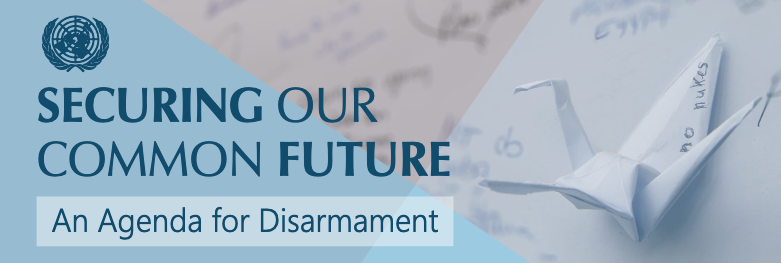UNODA Short Course Lethal Autonomous Weapon Systems
Overview
Although there is no internationally agreed definition for autonomous weapon systems, they have been described as “weapon systems that, once activated, can select and engage targets without further human intervention”. There are already weapon systems in service today that are capable of selecting and engaging targets without human intervention, once activated or launched (e.g. ship-based anti-missile systems).
The increasing development, deployment and use of lethal autonomous weapon systems pose various risks and challenges to international security, including by potentially sparking new arms races, lowering political thresholds for decision-makers to consider when it is appropriate to use force or by resulting in unintended escalation. Furthermore, they also raise ethical and legal concerns (i.e. compliance with international humanitarian and human rights law).
This short course provides an introduction to the topic of lethal autonomous weapon systems, discussing the risks their use may pose and the potential benefits they may bring. In addition, the course will also present the main actors involved and the platforms where this issue has been discussed.
Objectives
Upon completion of this course, you will be able to:
- Justify the significance of disarmament and non-proliferation
- Describe the role the United Nations and the UN Office for Disarmament Affairs (UNODA) play in addressing disarmament issues
- Describe what lethal autonomous weapon systems are, the risks they pose to international security, and the ethical and legal concerns they raise
- Present international efforts that have aimed at regulating the development and use of lethal autonomous weapon systems, including the establishment of the Group of Governmental Experts
- Understand the views advocated by governments, civil society organisations and the scientist community about the issue of lethal autonomous weapon systems
|
| Audience: The course is open to all interested audiences. |
|
| Components and Methodology: Each module takes approximately 20 minutes and can be completed at the learner’s own pace The course consists of two thematic modules:
The course is available in English and is held in the Disarmament Education Dashboard, thus participants need a computer or mobile device, with audio and reliable internet connection. No special software is required. |
|
| Certificate: Upon successful completion of thematic modules, including examination and course evaluation a certificate of completion will automatically be issued to the participant. |
Short-course Series
The UN Office for Disarmament Affairs Short Course Series aims at making available quality education material on disarmament, arms control, non-proliferation and issues cross-cutting with security, such as gender and development. The courses are targeted for and available to the general public at UNODA’S globally accessible e-Learning platform disarmamenteducation.org.
In line with the UN Secretary-General’s Agenda for Disarmament this short-course series aims to contribute to the implementation of the Sustainable Development Goals.


